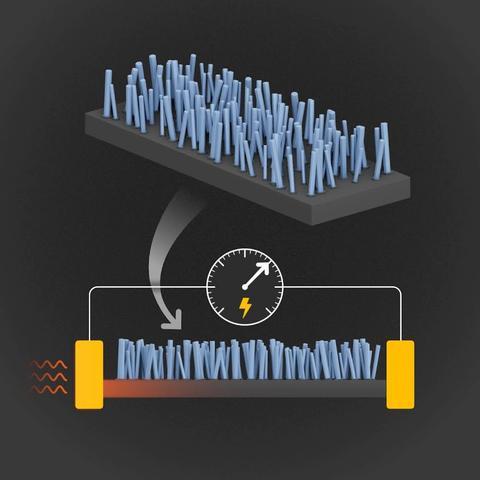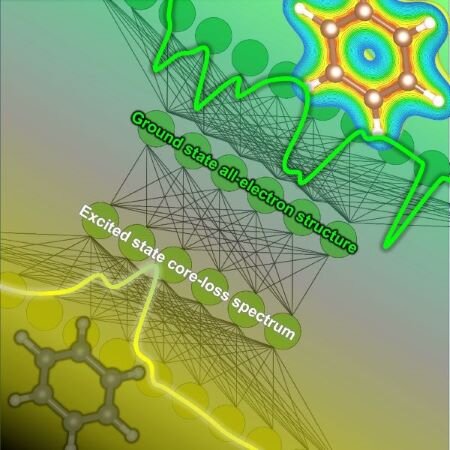2023-05-19 米国国立標準技術研究所(NIST)

Illustration of nanopillars used in a new design to efficiently convert heat energy into electricity.
Credit: S. Kelley/NIST
◆彼らは微小な突起を使用して熱伝導特性と電気伝導特性を分離し、効率的な熱-電力変換を実現しました。この方法は、シリコンシートの熱伝導率を21%低下させながら電気伝導特性を変えずに行います。
◆研究者たちは、経済的に実用化可能な熱-電力変換を達成するために、今後さらなる研究を行う予定です。
<関連情報>
- https://www.nist.gov/news-events/news/2023/05/nist-team-demonstrates-novel-way-convert-heat-electricity
- https://onlinelibrary.wiley.com/doi/abs/10.1002/adma.202209779
局所的なフォノン共鳴により、半導体の熱的・電気的特性が切り離されることが判明 Semiconductor Thermal and Electrical Properties Decoupled by Localized Phonon Resonances
Bryan T. Spann, Joel C. Weber, Matt D. Brubaker, Todd E. Harvey, Lina Yang, Hossein Honarvar, Chia-Nien Tsai, Andrew C. Treglia, Minhyea Lee, Mahmoud I. Hussein, Kris A. Bertness
Advanced Materials Published: 23 March 2023
DOI:https://doi.org/10.1002/adma.202209779
Abstract
Thermoelectric materials convert heat into electricity through thermally driven charge transport in solids or vice versa for cooling. To compete with conventional energy-conversion technologies, a thermoelectric material must possess the properties of both an electrical conductor and a thermal insulator. However, these properties are normally mutually exclusive because of the interconnection between scattering mechanisms for charge carriers and phonons. Recent theoretical investigations on sub-device scales have revealed that nanopillars attached to a membrane exhibit a multitude of local phonon resonances, spanning the full spectrum, that couple with the heat-carrying phonons in the membrane and cause a reduction in the in-plane thermal conductivity, with no expected change in the electrical properties because the nanopillars are outside the pathway of voltage generation and charge transport. Here this effect is demonstrated experimentally for the first time by investigating device-scale suspended silicon membranes with GaN nanopillars grown on the surface. The nanopillars cause up to 21% reduction in the thermal conductivity while the power factor remains unaffected, thus demonstrating an unprecedented decoupling in the semiconductor’s thermoelectric properties. The measured thermal conductivity behavior for coalesced nanopillars and corresponding lattice-dynamics calculations provide evidence that the reductions are mechanistically tied to the phonon resonances. This finding paves the way for high-efficiency solid-state energy recovery and cooling.



